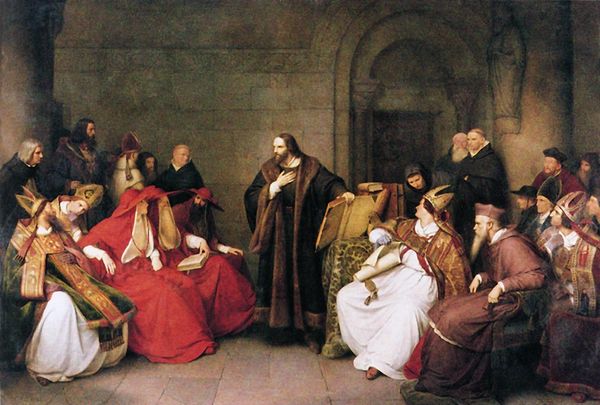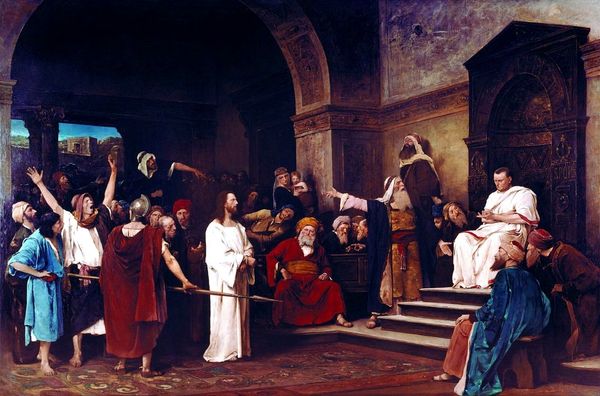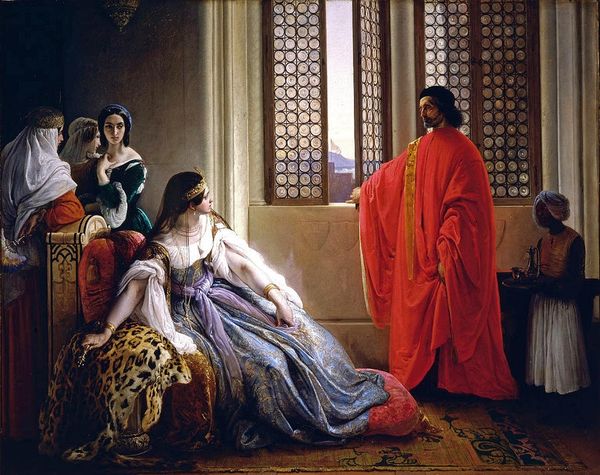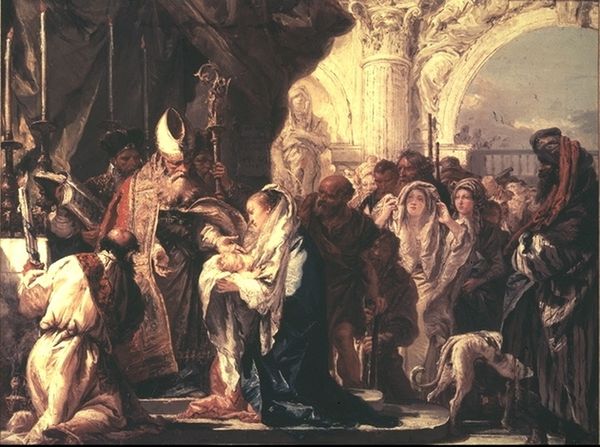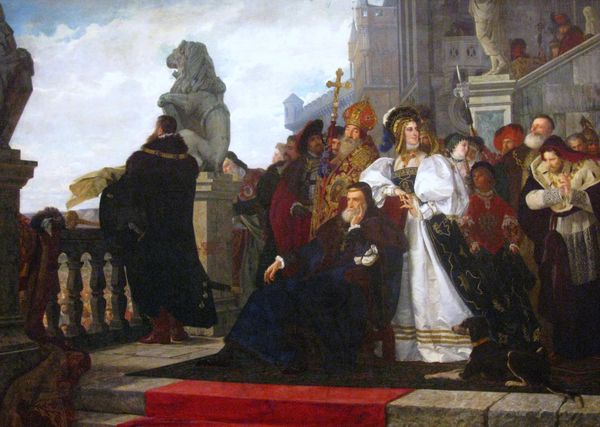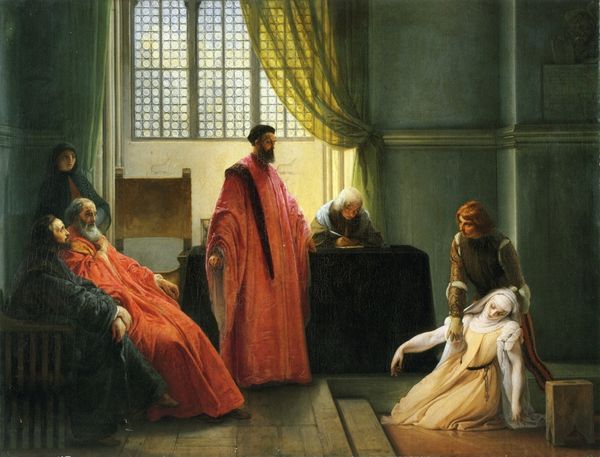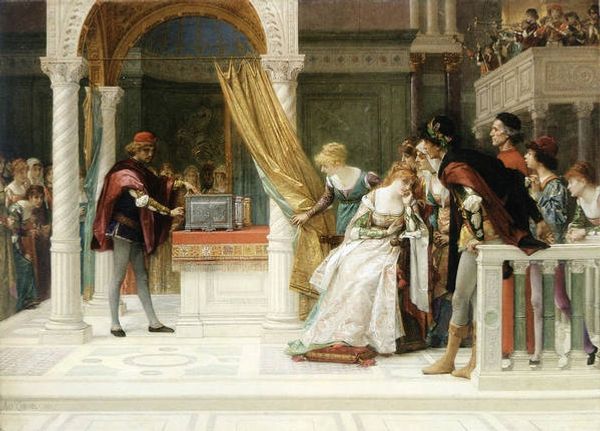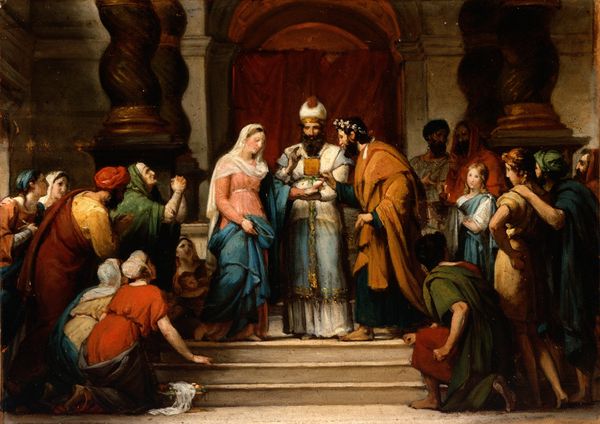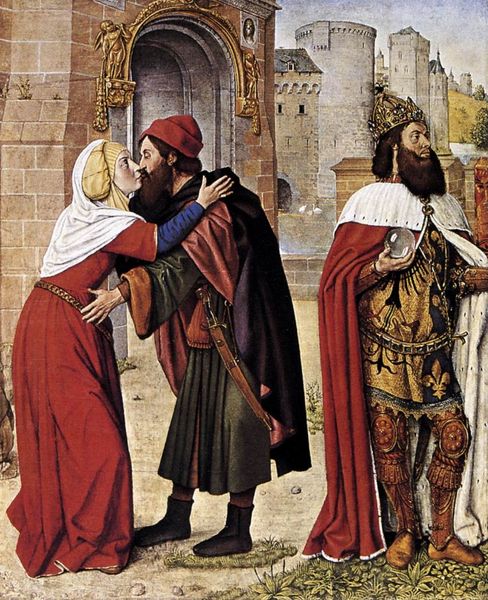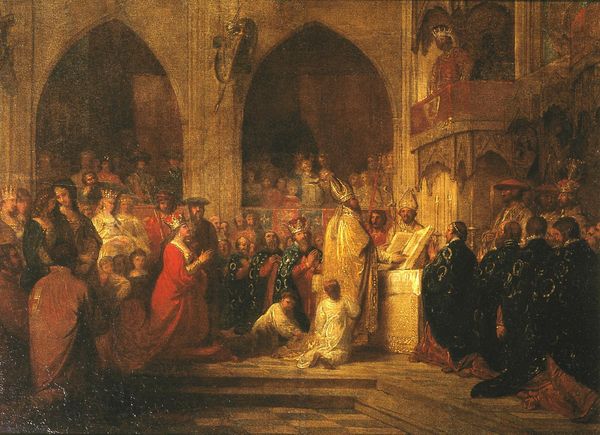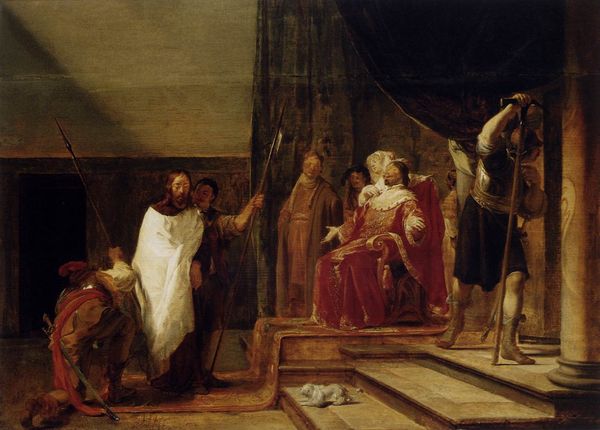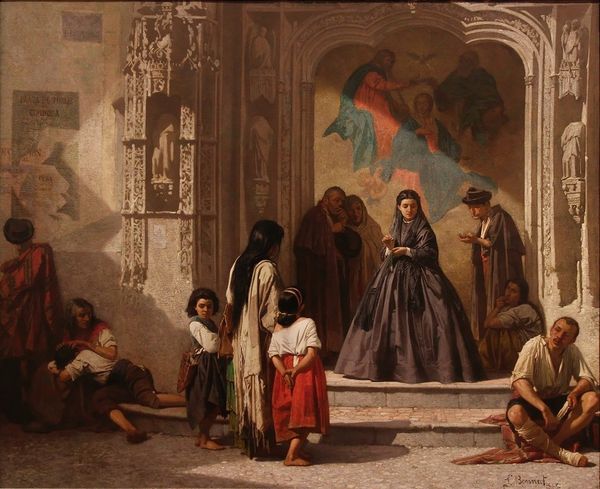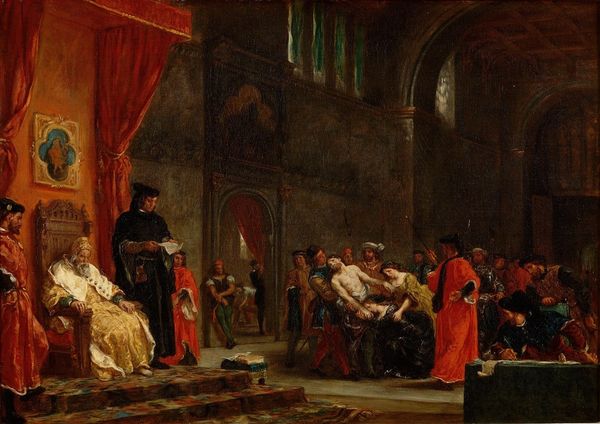
Dimensions: 120 x 167 cm
Copyright: Public domain
Curator: Francesco Hayez painted "The Two Foscari" in 1854. It is currently housed at the Palazzo Pitti in Florence. Editor: The lighting really enhances the drama. Everyone is clustered, yet they’re isolated by their individual reactions to whatever's unfolding. There's definitely an air of political intrigue hanging over everything. Curator: Hayez, working within the Romantic style, utilizes oil paint to depict a poignant scene from Venetian history. Observe the meticulous detail in the fabrics, from the Doge’s robe to the supplicant's worn clothing; each textile is rendered with stunning fidelity, contributing to the painting’s overall narrative. Editor: It is interesting to consider the role of women in this image; they seem trapped, maybe stifled. Even though we see children huddled around them, they are figures that are clearly excluded from accessing true authority in that moment. I find their grief to be very striking in terms of how women are expected to react to these powerful, historical narratives. Curator: Precisely! And consider the craftsmanship. Hayez consciously draws on Renaissance techniques while imbuing the work with a distinctly Romantic sensibility. There’s the application of glazes to build up color and the tangible texture of impasto, especially evident in the jewels and ornamental details of the Doge’s attire. How do these production choices affect the social understanding of it? Editor: By rendering such meticulous detail in the garments of power and illustrating the rougher clothes worn by others, it reinforces hierarchies. Hayez evokes class and, potentially, regional biases prevalent within Venetian society through clothing and other indicators of material culture. The supplicant, presumably one of the Foscari sons, throws himself at the Doge's feet, a literal illustration of the power dynamic that condemns him, even if the Doge, his father, seems sympathetic to the subject. Curator: Absolutely. It prompts questions about labor: the unseen artisans whose skills created the Doge’s garments, the sources of these expensive dyes and fabrics that marked their superior position. Those are the social forces at work. Editor: Examining the symbolism through this historical lens, it speaks to issues of patriarchy and inherited power—how these systems often trap individuals in predetermined roles and fuel societal inequalities. This canvas becomes a mirror reflecting our modern concerns. Curator: Agreed, understanding "The Two Foscari" means examining it not just as an isolated object, but as a complex product born from specific materials and a society undergoing constant re-negotiations of power. Editor: Exactly, which hopefully reveals enduring truths about the human condition in how systems impact our private selves.
Comments
No comments
Be the first to comment and join the conversation on the ultimate creative platform.
